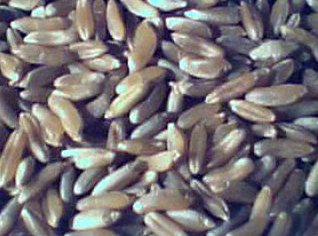Kamut

  | Kamut in TCM:Explore the properties of Kamut according to Chinese
Nutrition and Traditional Chinese Medicine (TCM):
Temperature: cool
Channels: ST, SP, HT, KD
Flavors: sweet
Tonifies: yin
Special Properties:
clears heat
In terms of Traditional Chinese Medicine (TCM) Kamut is known for its ability to tonify yin. It also helps to clear heat.
In general the ancient Chinese medical texts cite that it enters the Spleen, stomach[22], heart, and kidney. The flavor of Kamut is sweet, and it is considered to be cool in temperature.
Kamut, which is an ancient form of wheat, was almost extinct until its transplantation to Montana helped to revive the species. Kamut is "less allergenic" than wheat while sharing similar properties (HWWF 482). While it contains gluten it does not usually trigger celiac symptoms (although its best to start with small portions). Kamut has a lighter and more delicate flavor than wheat.
Kamut can help with poor appetite, abdominal distension, diarrhea, and muscle fatigue. To help gain weight in people who are too skinny, incorporate kamut as a staple in the daily diet. For muscle fatigue eat kamut cereal 1/2 hour before exercising. For abdominal distension cook kamut with tangerine peel, fennel, and ginger.[22]
Disclaimer: In accordance with our terms of service, by using this web site you agree that none of the information found on this web site constitutes medical advice. You should always consult your doctor before trying any particular food or herbal remedy to treat disease.
Folk remedies presented on this site are designed to address specifc TCM diagnoses, and are not one-size-fits-all. If you would like to learn more about Traditional Chinese Medicine (TCM) and how it relates to Chinese Nutrition, you can book in a free call with a licensed professional. There is no obligation to purchase.
[CLICK HERE for your free INITIAL CONSULTATION] |

